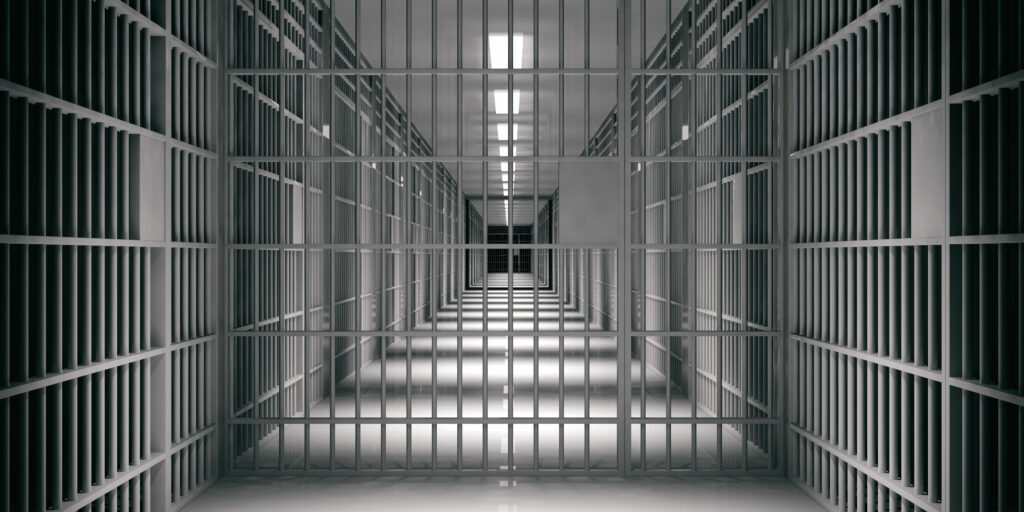 Sexual assault in prison has long been a problem, and incidents of prisoner sexual assault are more common than you might think.
Sexual assault in prison has long been a problem, and incidents of prisoner sexual assault are more common than you might think.
A U.S. Department of Justice study indicates that 4.0% of state and federal prison inmates and 3.2% of local jail inmates were sexually victimized by another inmate or staff member in the past 12 months or since they were admitted to their facility if less than 12 months. But those are only the reported cases – prisoner rights advocates say the number of sexual assaults in correctional facilities is much higher, especially those involving juvenile inmates.
In 2003, Congress passed the Prison Rape Elimination Act (PREA) to eradicate prisoner sexual assault. The law sets standards to prevent, detect, monitor, and respond to sexual abuse in all correctional facilities, including prisons, jails, and juvenile and immigration detention centers.
PREA Standards and Protections
PREA set various standards to ensure inmate well-being, including:
• Screening and assessing inmates for risk of sexual victimization.
• Training staff on the prevention and detection of sexual assault and abuse.
• Ensuring adequate staffing levels and supervision.
• Separating inmates at high risk of sexual victimization.
• Providing access to medical and mental health services for sexual assault and abuse victims.
• Timely and confidentially reporting sexual assault and abuse.
• Offering advocacy services for victims.
• Protecting individuals from retaliation for reporting sexual assault and abuse.
These standards are designed to be flexible and adaptable to each individual’s needs, including lesbian, gay, bisexual, and transgender (LGBT) inmates. The DOJ study showed LGBT inmates are much more likely to suffer sexual assault by another inmate than heterosexual inmates.
PREA’s Protections for Transgender and Intersex Inmates
PREA specifically recognizes that transgender inmates are at increased risk of sexual assault and abuse and that to ensure their safety and protect their dignity, they require specialized care and accommodation, such as:
• Screening and Assessment: At intake, facilities must identify transgender or intersex people and individually assess each inmate to determine their housing placement and any necessary accommodations.
• Housing: Facilities must consider the health and safety needs of transgender inmates, housing them in a manner that ensures their safety, privacy, and dignity, considering factors such as gender identity, body size, and personal safety concerns.
• Searches: Facilities must conduct searches of transgender inmates in a manner that is respectful of their gender identity while reducing the risk of humiliation or harm. For example, facilities should offer transgender inmates the option of being searched by an officer of the same gender identity or by a medical professional.
• Personal Property: Facilities must allow transgender inmates to possess personal items necessary to express their gender identity, such as clothing, cosmetics, and grooming products. Transgender inmates must also be allowed to access medical care and hormone therapy to support their gender transition.
• Staff Training: All facility staff must receive training on how to interact with transgender inmates respectfully and appropriately. This training should cover issues such as gender identity, appropriate pronoun usage, and how to respond to incidents of harassment or abuse.
Does PREA Give Sexually Assaulted Inmates the Right to Sue Correctional Facilities?
Although PREA seeks to shield and protect incarcerated persons from rape and sexual abuse, it does not establish a cause of action if the prisons, jails, and detention centers where they are housed violate the act. That doesn’t mean inmates lack the right to sue facilities that negligently or recklessly disregard the law.
Other state and federal civil rights statutes offer inmates a way to recover damages if they are raped or sexually assaulted while incarcerated. Showing a facility failed to comply with PREA’s standards can be used to show prison officials’ failure to institute safety measures to protect inmates from sexual violence.
Not Every Lawyer Is Qualified to Handle a Prison Rape or Sexual Assault Case
If someone is charged with a crime, they wouldn’t hire a business lawyer to defend them, and the same is true with prison sexual abuse cases.
Winning a lawsuit against a correctional facility for inmate sexual assault is difficult. A lawyer needs to know the specific laws that apply, overcome prison bureaucracy to obtain evidence and get to the truth, and take the time to make sure you understand all aspects of the case and proceedings.
The Lamothe Law Firm has successfully represented incarcerated people who have suffered the physical and emotional pain of prison rape and sexual assault. If you’re a survivor of such an injustice, we’ll treat you with the respect and professionalism you deserve, and we’ll fight for your rights whether you remain incarcerated or have been released. Contact us today for a free consultation to discuss your case.









